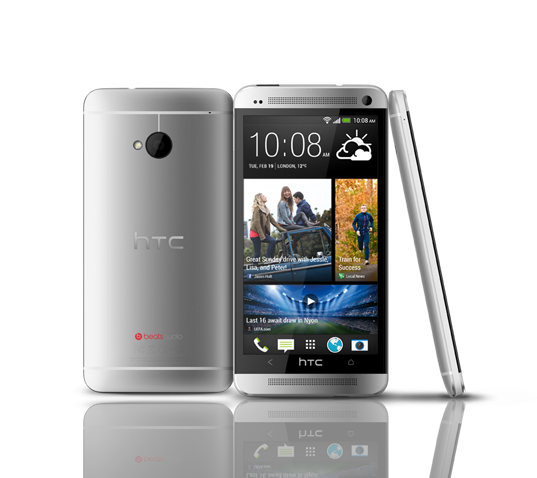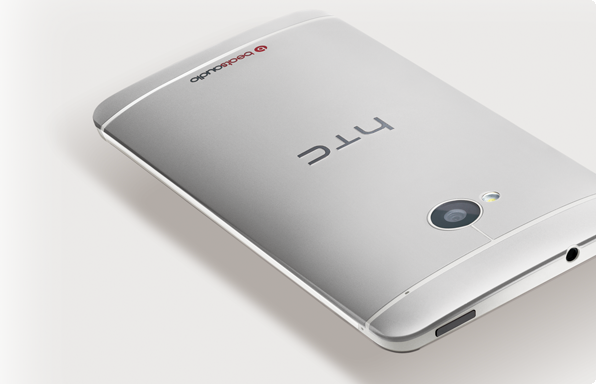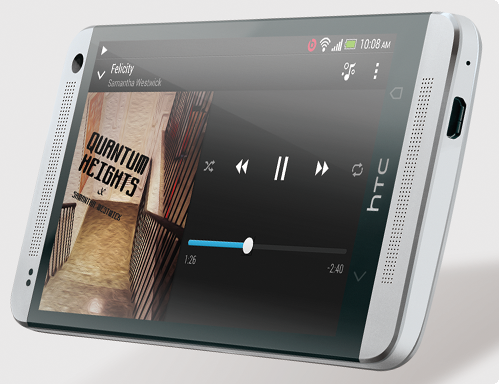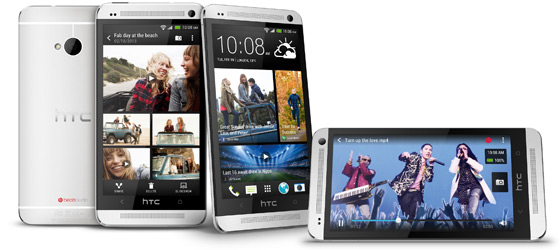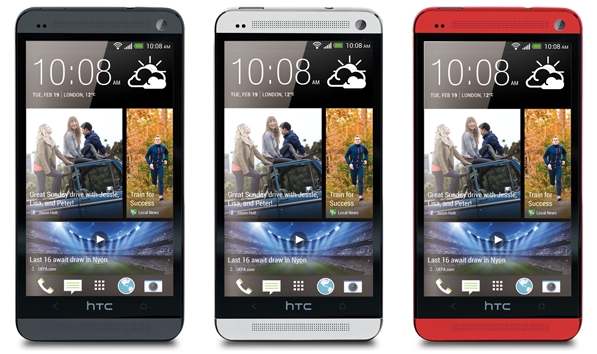In almost simultaneous events in London and New York, HTC has announced its latest flagship Android smartphone, the HTC One. With its announcement well before the flurry of new device launches scheduled for next week’s Mobile World Congress, HTC may have taken a step ahead of the competition. And boy, the One certainly does not disappoint.
Featuring a 4.7-inch, Full HD screen, it takes the crown as the densest screen on a smartphone at 468ppi. With HTC’s beautiful Super LCD 3 technology, the screen could also just be the best one yet. The One is powered by the latest Qualcomm Snapdragon 600 processor, buzzing at 1.7GHz and paired with 2GB of RAM. There’s a healthy 32GB of flash storage, as well as a 64GB option.
More hardware innovation from HTC after the jump.

As a flagship device, the HTC One is laden with connectivity options. LTE is standard, as is NFC, Bluetooth, WiFi, DLNA and MHL (via micro USB converter). The One is also fitted with a 2300mAh lithium polymer battery. At its thickest point, the One is 9.7mm thick, but tapers to a mere 4mm at the sides.
HTC is proud to state that the HTC One was built with a “zero gap construction” with chamfered edges, and is made almost entirely out of aluminium. The matte aluminium unibody does bring up images of the iPhone 5 to mind, but the sloping back and HTC-esque branding does make it different. To circumvent the issues that plague aluminium phones and antenna performance, HTC has managed to integrate the antenna onto the body itself. HTC has also added an IR sensor on the power button, which transforms the One into a virtual remote control for the TV.
In addition, the HTC One continues the company’s heritage of audio quality in its products. The One features BoomSound, a mix of impressive audio hardware and software. Two stereo speakers sit at the top and bottom of the screen, with the largest chambers ever on a phone. There’s even a built-in amplifier, and the ever-present Beats Audio enhancements, making the One one of the most impressively-specced smart devices in terms of audio hardware.
But HTC does not stop there in terms of hardware innovations on the One. For the first time ever, HTC has announced what it has christened the UltraPixel camera. In what is a clear attempt to dethrone Nokia’s position as the mobile imaging powerhouse, the company has talked up the UltraPixel as the next big thing in mobile imaging. Featuring individual pixels that are larger and absorb three times more light than conventional pixels, the UltraPixel camera on the HTC One promises to produce superior photos, whether in sports mode, burst mode, and of course, low-light conditions. Due to the larger pixels, the UltraPixel camera only shoots at 4MP.
It is also worth mentioning that the front-facing camera on the One is similar in specs to the f2.0, 2.1MP module found in the HTC 8X, which has an 88-degree wide angle lens. Also, the camera sensor is equipped with a gyroscope-based, multi axis Optical Image Stabilization, for the rear and front-facing camera, which should ensure better video recording quality. And, like the upcoming Sony Xperia Z, the HTC One also features High Dynamic Range (HDR) video recording.
On the software front, HTC has revamped its Sense UI. Now called the New Sense, it features a completely redesigned default home screen with something called Blink Feed. Blink Feed pulls in social media feeds as well as over 1600 content providers to provide information at a glance – a concept similar to snacking on food, according to HTC. The company believes that Blink Feed provides a better way of browsing through user-customisable, bite-sized information rather than icons and widgets found on conventional Android home screens. However, users can revert to the old home screen settings should they find Blink Feed not to their liking.
HTC has also added the new HTC Zoe mode for the camera. It sports a feature similar to Samsung’s “Best Face”, Windows Phone 8’s “Smart Shoot”, and BB10’s “Time Shift” option, where the camera shoots five frames about a second before the shutter is pressed, and another 15 after it is pressed, and a 3-second video during that period. There’s also an option to combine all 20 images to form an animated GIF file. These photos and videos are then integrated onto the HTC Gallery app, where the HTC Zoe proves to be more than just a camera mode. For more information on HTC Zoe, check out Know Your Mobile’s succinct explanation here.
The HTC One will be released to more than 80 countries globally, and is the company’s largest ever rollout for a device, but it is not yet known at the time of writing whether Malaysia is included in this first group. The HTC One will be available in Silver, Black and Red colourways, and as mentioned earlier, in storage options of 32GB or 64GB. Pricing for the HTC One has not yet been revealed.
It appears HTC has really stepped up its game here with the HTC One. Sporting a mix of very impressive hardware and industrial design with interesting software additions, the HTC One may just be the One Android smartphone to rule them all.
Follow us on Instagram, Facebook, Twitter or Telegram for more updates and breaking news.


